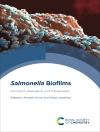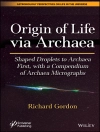This highly acclaimed atlas distills the vast science of climate change, providing a reliable and insightful guide to this rapidly growing field. Since the 2006 publication of the first edition, climate change has climbed even higher up the global agenda. This new edition reflects the latest developments in research and the impact of climate change, and in current efforts to mitigate and adapt to changes in the world’s weather.
The atlas covers a wide range of topics, including warning signs, vulnerable populations, health impacts, renewable energy, emissions reduction, personal and public action. The third edition includes new or additional coverage of a number of topics, including agreements reached in Copenhagen and Cancun, ocean warming and increased acidity, the economic impact of climate change, and advantages gained by communities and business from adapting to climate change. The extensive maps and graphics have been updated with new data, making this edition once again an essential resource for everyone concerned with this pressing subject.
Inhaltsverzeichnis
Voices & Visions of Our Future
Wangari Maathai
Philippe Cousteau
About the Authors
Introduction
Definition of Key Terms
PART 1 SIGNS OF CHANGE
1 Warning Signs
The array of extreme events in 2010 stand out among thousands
of signs of climate change.
2 Polar Changes
Warming in the polar regions is driving large-scale melting of ice
that will have both local and global consequences.
3 Shrinking Glaciers
Glaciers are losing mass and are in retreat.
4 Ocean Changes
Oceans are getting warmer and more acidic, affecting marine life.
5 Everyday Extremes
The frequency of some extreme events is increasing.
PART 2 The Changing Climate
6 The Greenhouse Effect
The intensification of the greenhouse effect is driving changes in
the Earth’s climate.
7 The Climate System
The entire climate system is adjusting to an increase in the heat
trapped in the Earth’s atmosphere.
8 Interpreting Past Climates
Concentrations of CO2 and CH4 are higher than at any time in
the last 650, 000 years.
9 Forecasting Future Climates
Global temperatures are predicted to continue rising.
10 Climate & Social Crises
Climate change results from complex interactions in the natural
environment, coupled with social and economic changes.
PART 3 DRIVING CLIMATE CHANGE
11 Emissions Past & Present
Most greenhouse gases have been, and are, emitted to meet the
needs of modern industrial societies.
12 Fossil Fuels
The emission of greenhouse gases from the burning of fossil fuels
is the major cause of climate change.
13 Methane & Other Gases
A range of greenhouse gases contribute to climate change.
14 Transport
International trade and travel, and dependence on motor vehicles
make transport a major source of greenhouse gas emissions.
15 Agriculture
Agriculture is a major source of emissions, and vital for economic
welfare in many countries.
16 The Carbon Balance
Changes in stored carbon are contributing to climate change.
PART 4 EXPECTED CONSEQUENCES
17 Disrupted Ecosystems
Many species and ecosystems may not be able to adapt to new
climatic conditions and stresses.
18 Water Security
Water scarcity has already become a major stress in some regions.
Climate change may raise the stress level.
19 Food Security
Climate change threatens future agricultural development in some
regions, and is benefiting others.
20 Threats to Health
The recent increase in the number of victims, and the economic
costs of weather-related health effects may be a sign of the future.
21 Rising Sea Levels
Thermal expansion of oceans and melting ice will lead to a
substantial rise in sea level, threatening many coastal communities.
22 Cities at Risk
The combined impact of changes in the climate is falling
particularly hard on rapidly growing cities.
23 Cultural Losses
Climate change is threatening sites that represent the world’s
cultural and historical heritage.
PART 5 RESPONDING TO CHANGE
24 Urgent Action to Adapt
As climate change becomes more marked, the need for adaptation
will be ever greater, and more difficult.
25 Building Capacity to Adapt
There is a need to develop effective strategies and actions, and to
support efforts being made at all levels.
26 City Responses
Cities around the world are taking action to reduce their emissions.
27 Renewable Energy
Renewable energy sources could be the key to economically and
socially sustainable societies.
28 Low Carbon Futures
Economic growth needs to be achieved with lower greenhouse gas
emissions, especially in developing countries.
29 Counting Carbon
Accurate accounting of carbon and greenhouse gas emissions is
essential.
PART 6 INTERNATIONAL POLICY & ACTION
30 International Action
Most countries have acknowledged the problem of climate change
by signing the Convention on Climate Change.
31 Meeting Kyoto Targets
Not quite half of Annex I countries are close to meeting their Kyoto
commitments. And the agreed targets fall short of what is needed.
32 Looking Beyond Kyoto
Negotiations are continuing in the search for a suitable
international response in a post-Kyoto world.
33 Trading Carbon Credits
Trading carbon credits encourages investment and shares the
burden of reducing emissions.
34 Financing the Response
Finance for responding to climate change has improved
dramatically but is still far from what is required.
PART 7 COMMITTING TO SOLUTIONS
35 Personal Action
People all over the world are taking measures to reduce the
greenhouse gases emitted as a result of the way they live.
36 Public Action
The policies, practices, and investments of governments,
businesses, and civic organizations will have the greatest impact
on our future.
PART 8 CLIMATE CHANGE DATA
Table
Sources & Notes
Photo Credits
Index
Über den Autor
Kirstin Dow is Associate Professor of Geography at the University of South Carolina. She is a lead author in the IPCC Fifth Assessment, Working Group 2 effort on Adaptation Opportunities, Constraints, and Limitations and a contributing author to the chapter on coasts. She is also Principal Investigator of the Carolinas Integrated Sciences and Assessments, an interdisciplinary research effort to bridge climate science and decision-making. She serves as a science advisor on climate change mitigation and adaptation for community and national efforts. Thomas E. Downing is President of the Global Climate Adaptation Partnership and Visiting Professor at Oxford University. He was formerly Executive Director of the Stockholm Environment Institute, Oxford Office and is a contributor to the Intergovernmental Panel on Climate Change and advisor to national and international programs on climate change.












